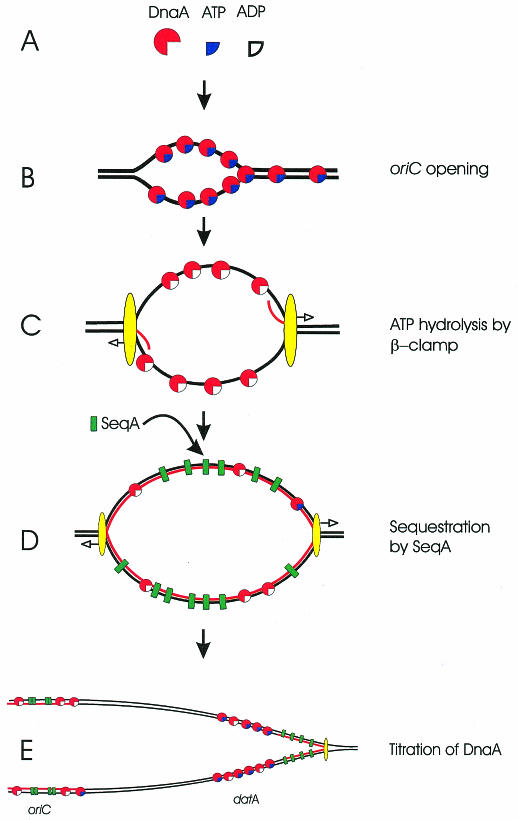Fig. 1. Schematic representation of mechanisms to limit initiation of chromosome replication in E. coli. The DnaA protein can bind ATP or ADP (A), bind to oriC and separate the DNA strands (B). After loading of the DnaB helicase, primase, and the elongation machinery the DnaA-bound ATP may be reduced to ADP by the β-clamp, which is part of the polymerase complex [yellow ellipse, (C)]. It should be noted that this ATP hydrolysis may continue as long as the β-clamp is loaded and not only shortly after initiation. The nascent DNA strands are unmethylated (red) and the SeqA protein binds hemimethylated DNA (D) and sequesters hemimethylated oriC. SeqA remains bound at the hemimethylated oriC long after the replication fork has passed datA, which titrates a large amount of DnaA (E). Note the difference in scale in the different panels.

An official website of the United States government
Here's how you know
Official websites use .gov
A
.gov website belongs to an official
government organization in the United States.
Secure .gov websites use HTTPS
A lock (
) or https:// means you've safely
connected to the .gov website. Share sensitive
information only on official, secure websites.
